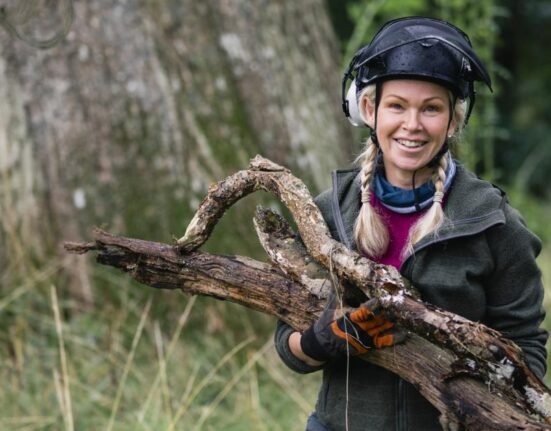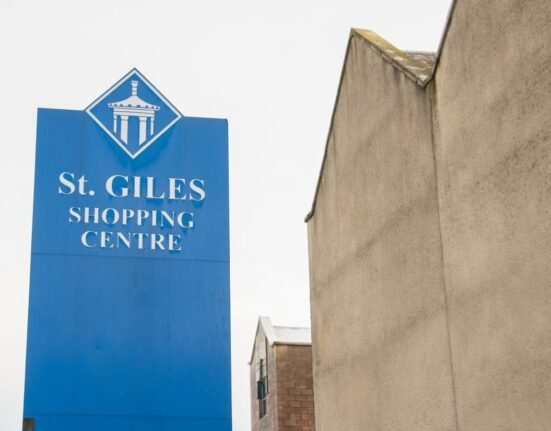Land agents are appraising many more potential farm and land sales than a year ago.
Whether these all come to the market in 2025 remains to be seen.
While the acreage put on the open market in the first quarter of this year was well down compared with 2024, there is a general feeling among agents that the acreage will pick up significantly but, given such high demand, probably not enough to test values strongly.
See also: Farm and land sales: Common issues that delay and complicate
The past few weeks has seen some top-end commercial units and large blocks of bare land launched in several counties, with well-established commercial farming businesses being strong buyers as they look to expand when the right acreage and location comes up.
Investment interest is also strong for equipped farms and increasingly for decent-sized bare land blocks to let on farm business tenancies (FBTs) or with a view to environmental uses or long-term development potential.
Investment interest
Some investment buyers left the UK last year either in anticipation of a Labour election win, or post election, say agents. “Quite a lot of lifestyle buyers have gone abroad for a while,” says Will Matthews of Knight Frank.
Institutional investors are still in the UK farmland market and some quite big deals have gone through, including to religious groups, he says.
Brown & Co’s Ed Blundy sees institutional investors looking to spend a lot of money all at once on farming assets, but says the opportunities to do so in the UK are few and far between.
However, there is potential to drive investment in land for certain permanent crops further north from southern Europe, where climate change is challenging the future of crops such as olives, nuts and citrus.
At Carter Jonas, Andrew Chandler says that traditional investors such as the Crown and the Colleges are still in the market, but there has to be an alternative angle for such buyers.
“For example, land with long-term strategic development potential or an ecological use, such as BNG.”
Savills’ Alex Lawson says that smaller and offlying blocks of bare arable land, sometimes second and third quality, are more recently of interest to institutional buyers for social and environmental uses.
This brings a potential new buyer for land which traditionally would have been snapped up by neighbours who are now less keen because of the uncertain outlook for farming returns.
Cashflow pressures
Cashflow difficulties on some arable and livestock units due to not being able to get into the Sustainable Farming Incentive could bring more land onto the market later in the year, suggest some agents.
At GSC Grays, which covers the north-east and north-west of England, director John Coleman says that the firm is viewing about 50% more farms and bare land blocks than a year ago.
“Most of these are bare land and most will come to the market,” he says.
The firm has a 1,000 acre property coming on in the next few weeks, this is a residential estate with the land currently on FBTs ending late this year. It also has a 400-acre arable and poultry farm coming on shortly.
“With poultry being at the top of the cycle, we might see a bit more of that,” says John.
“Pig farmers are in the market for additional cropping land to be in control of their feed prices, and also because they need the land on which to spread muck.”
At Carter Jonas, head of rural agency Andrew Chandler, says the firm is pitching on more land than for the past few years.
The three Ds – death, debt and divorce – still feature strongly as key reasons for sale, but some restructuring is also going on, he says.
“For example, selling off-lying land to rationalise the farming operation, selling to invest outside farming to spread risk, or to help children into the property market.”
Additionally, whole farms and estates are being sold so the vendors can relocate, and in cases following a death and where there are several beneficiaries they are sometimes deciding to sell to invest in something that can give them a better return than farming.
Bank support
Banks are mainly supportive of farming businesses, although suggesting in some cases that rationalisation is needed in the form of land sales to reduce debt, say agents.
“They are not putting pressure on at the moment, but we know it’s coming,” says Ed Blundy, head of rural agency at Brown & Co.
“Broadacre combinable crops are difficult and people are going to have to be clear about serviceability of borrowing, and if you can’t produce the cash, they won’t lend.”
The firm has launched several quality commercial arable farms recently as well as bare land sales and Ed is seeing a number of retirement sales where the next generation is not interested in taking on the farm.
“Good land is still making good money, especially where there is scarcity but ordinary land in an unfashionable parish might struggle to sell.
“This is an opportunity for some institutional investors to assemble fragmented portfolios and let the land for decent rents – there are plenty of people wanting to farm it.”
Many conversations about ownership and structure and succession planning are going on, says Savills’ head of rural agency Alex Lawson.
“Quite a lot of land is likely to come to the market and it will need careful pricing. There have been some good sales already this year, but supply is still constrained and demand is very varied.
“Geopolitics makes things difficult and that affects market sentiment. There are some clouds and some issues but there are some good buyers.”
International interest
There is also serious interest in UK land from international buyers, and while investment by foreign interests is not new, more recently it includes some large European regenerative farming investment vehicles, says Alex.
Buyers remain active but are becoming more selective, says Sam Holt, head of estates and farm agency at Strutt & Parker.
Echoing others on the high demand from well-established farming businesses for commercial farmland with high quality soils, he says location remains key.
“The market is slower in more remote areas with few diversification opportunities and for farms with a large residential element, which reflects broader trends in the housing market.
“The most sought-after assets currently are high-quality Grade 1 land and farms or estates which can generate additional revenue streams without requiring significant upfront investment.
“In contrast, properties with large residential portfolios or redundant buildings requiring conversion are facing more scrutiny due to high building costs and policy changes such as the Renters’ Rights Bill.
“Given the headwinds currently facing the rural sector there could be even greater variability in values as we move through 2025.
“High prices will continue to be achievable for the right farm in the right place, but in less popular areas vendors may need to adjust their expectations on the length of time it will take them to secure a buyer and be realistic on price.”
At Ceres Property the team is being asked to look at more and more land, says associate partner Peter Mason.
“The dominant players in the market now constitute high-net worth individuals, large farming institutions and agri-businesses, farmers with rollover money and other rollover buyers looking for capital gains tax relief, especially given how much development is taking place given Labour’s push for ‘build, build, build’.
“Traditionally local farmers would have been the obvious buyer, but due to the challenges the agricultural industry has faced in the last few years, this has fundamentally changed. There is caution from the more typical farming businesses in terms of any further purchase of land.”
South-west market
Land agent Stags has offices in Devon, Cornwall, Somerset and Dorset.
Across Devon there is strong demand for productive parcels from larger, well-established farms looking to expand, says Robin Fern, with competition particularly strong for the bigger blocks.
Investment buyers are also in this market, looking for good land that they can let for a good rent, although investment interest in whole farms has reduced, says Robin.
Sales are often retirement led, as well as because of death, debt, divorce and in some cases partnership splits.
The firm recently sold a 50-acre block of arable land for a fraction under £700,000, or £13,500/acre, and is about to launch another 30 acres of level productive land in a very strong area.
His colleague Andrew Dodds, covering north and mid Devon, Exmoor and Somerset, says he is carrying out more market appraisals than for the past couple of years.
He recently sold 110 acres of bare land west of Bideford, Devon, for very close to its £12,000/acre guide price but says that the market is very localised.
Stags put the 272-acre Kendon Farm on the market in late February and a price was agreed within two to three weeks of launch.
“It went a lot quicker than we were anticipating, as the sentiment at the end of last year was quite negative,” says Andrew.

Kendon Farm © Stags
Firm demand for bare land
Knight Frank’s Farmland Index, an opinion-based survey of the value of commercial English and Welsh farmland with no houses or buildings, sees average values down by 1% in the first quarter of 2025 compared with the previous three months.
At £9,072/acre, this is 1.9% lower than a year earlier, reflecting the tight supply of publicly marketed land, says the firm.
Demand remains firm, says Will Matthews, the firm’s head of farm and estate sales.
“A large block of land in the Midlands, for example, sold for around £13,000/acre to a progressive farming business, with most other sales breaking the £10,000/acre barrier.”
The cut in IHT relief in the October 2024 Budget has not so far resulted in much land being put on the market, with legal and tax advisers seeing 2025 as a year for taking stock and planning.
“We’ve not seen significant post Budget reaction, but it may be the final straw for one or two in deciding to put farms or land on the market,” says Will.
Despite good demand and quite positive signs in the market, some of those planning to sell have been spooked by the current economic and political circumstances, delaying launches until the early summer once they see how the market goes in May, says Will.
Carter Jonas says average farmland values across England and Wales grew moderately in the first quarter of 2025, with average arable land values up by 0.9% to £9,811/acre, while pasture land rose 0.8% to average £7,959/acre.
Over the year to the end of March, the firm puts arable land values up by 1.5% on average and pasture land by 1.9%, with arable acres 3.5% below their 2016 peak value and pasture land at record levels and 4.5% above its previous peak, with Northern regions largely fuelling recent increases.
“There is anecdotal evidence of transactions being agreed at well above guide prices where land is well-positioned and there is a strong commercial interest,” says the firm’s Andrew Chandler.
“In particular, there are active requirements from commercial farmers seeking equipped farms with existing infrastructure or the opportunity to build specialised infrastructure.
“Outside of these markets, some types of land are experiencing increased price sensitivity, which could potentially lead to value readjustments or an acceleration in lotted sales to broaden appeal.”
On the open market in 2025
- England 14,353 acres (24% less than in January-March 2024)
- Scotland 2,122 acres (34% less than in January-March 2024)
- Wales 1,247 acres (48% less than in January-March 2024)
- GB 17,723 acres (28% less than in January-March 2024)
These figures cover lowland farms and farmland over 50 acres, advertised in printed national and regional media and online property portals.
The figures include both vacant and let farms and land, but exclude off market sales..
Source: Savills
Acres launched in 2025
The national land agents all monitor market activity on a slightly different basis and while they are looking at more potential sales in 2025.
All say that a lower number of acres has been acres launched so far this year compared with early 2024.
Farmers Weekly’s Land Tracker, which appears on the land editorial page positioned just ahead of the land and farms advertising section, shows that about 20% fewer acres have been advertised so far this year compared with January to mid April last year.







